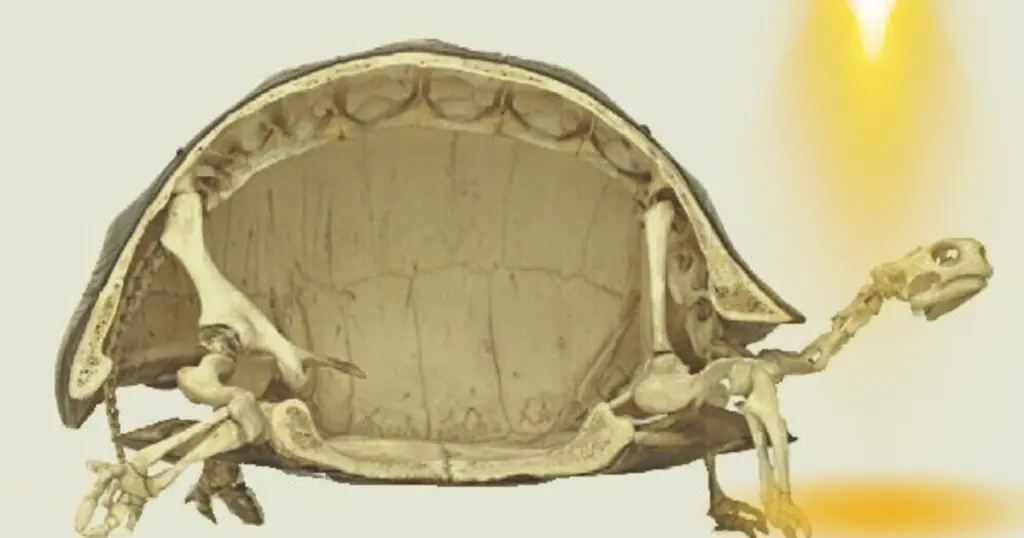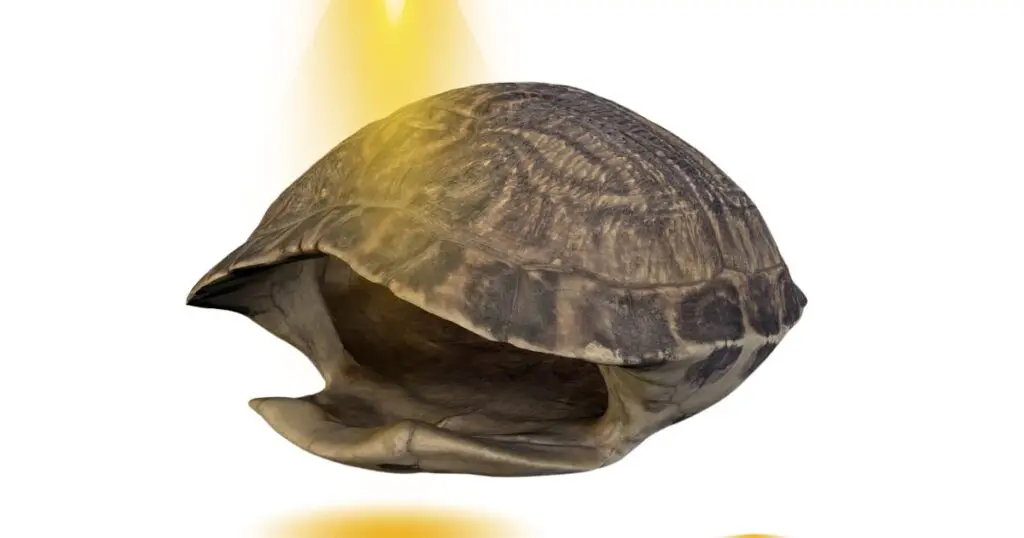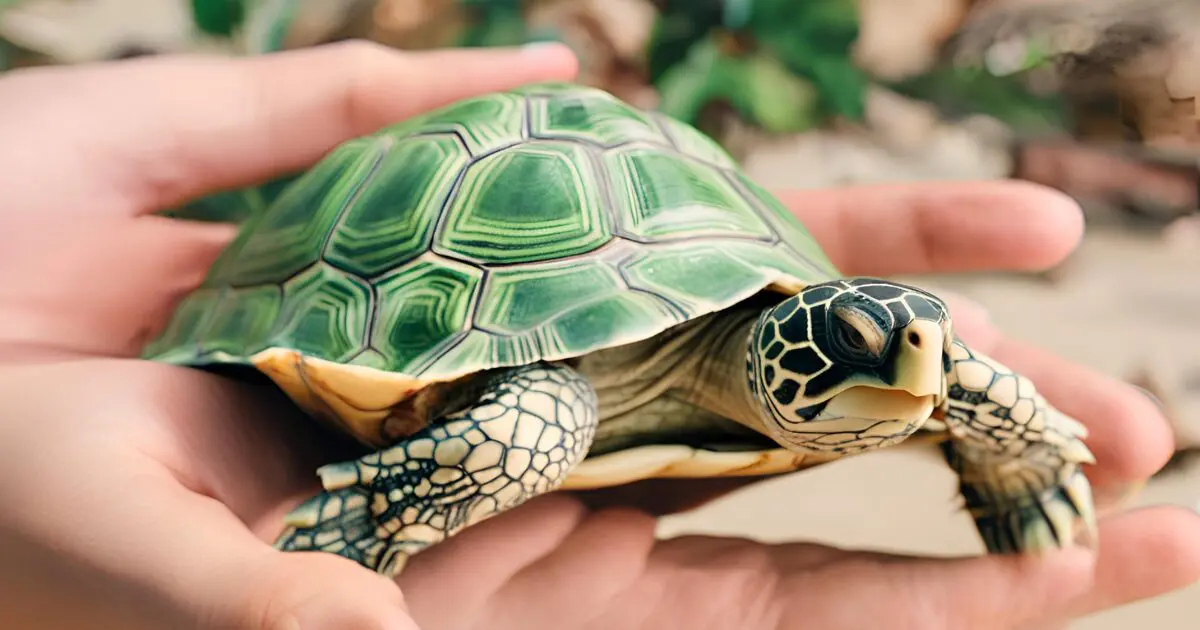Have you ever seen a turtle without its shell? I bet you haven’t, not after becoming an adult. Some may think that these shells can be removed, but they cannot be. It becomes a part of their body. So, can turtles survive without a shell?
No, a turtle cannot survive without its shell. The shell is fused to their spine and ribs. They become built-in skeletons. It protects them, regulates temperature, and stores nutrients. They’d be very vulnerable and unable to function. You must never try to pull off their shells by force.
This may sound a bit weird, but it is the truth. Maybe a little more scientific information will help. Then, let’s begin.
Can Turtles Survive Without A Shell: Who Not?
Turtles are absolutely dependent on their shells for survival. It’s not like a hermit crab’s shell or a borrowed home. A turtle’s shell is part of its body. Their spine and ribs are actually fused to the underside of the shell. Removing it would be like removing their bones- impossible and fatal.
These shells are not like an external backpack. Nope, they aren’t. The top part (carapace) fuses with modified bones like ribs and vertebrae during development. It’s a bony layer growing right beneath the skin, making it a permanent part of their body.
Inside a turtle’s shell are all its vital organs! This includes their heart, lungs, stomach, intestines, liver, and reproductive organs. The shell itself is also special. It’s made up of two parts: the carapace (top) and the plastron (bottom). These are connected by bridges on either side.
Why Do Turtles Need Their Shells?
Turtles are instantly recognizable by their shells. However, this isn’t just a cool accessory. The shell is a multi-functional marvel, crucial for a turtle’s survival. Here’s why turtles need their shells:
1. They Need It for Protection
The most obvious benefit is protection. The shell acts as a shield and deflects from predators like raccoons or foxes. Some turtle shells are hinged, allowing them to completely withdraw their head and limbs inside for ultimate defense.
That is not all. The shell protects its soft body and crucial organs. Without this armor, they will be exposed to their predators and will be endangered to death.
2. Home on the Go

Imagine your house traveling with you wherever you go! That’s what the shell is for some turtle species. They can pull their head, legs, and tail completely inside the shell. This creates a portable fort, protecting them from danger or harsh weather.
Think of a land turtle burrowing underground at night. The shell acts like a safe little room. It keeps them snug and secure. Some aquatic turtles even use their shells to hide from predators in the water.
3. Built-in Backpack
The bony plates of their shell aren’t just for show. They actually store important things a turtle needs to survive. They can store food for rough times when food might be scarce. During winter, some turtles rely on these reserves to stay alive during hibernation. Wonder where do turtles go in winter?
The shell can also store minerals, like calcium, which is essential for keeping their bones strong. It ensures they have the nutrients they need to stay healthy and grow.
4. Temperature Control
Unlike us, turtles can’t heat themselves up. That’s where their amazing shell comes in. It acts like a natural sunbathing suit. When it’s chilly, a turtle becomes a sunbather extraordinaire. It stretches out, soaking up the sun’s rays through its shell.
The dark color of the carapace absorbs heat, warming the turtle from the inside out. But the shell isn’t just for getting warm. When it’s hot, a turtle can burrow underground.
The shell helps trap heat in the cooler soil, keeping the turtle comfortable. Some water turtles might even hide in the shade of their shell to avoid getting too toasty.
5. Aiding Respiration
The shell is hard and heavy. Does it affect their breathing? Not actually. On the contrary, it actually helps. Turtles have special muscles connected to their shell. These muscles contract and relax, squeeze air into the lungs, and push out used air.
The bony plates act as a firm base for these muscles to work their magic. In some species, even the movement of their limbs inside the shell can help with breathing. So, next time you see a turtle taking a breath. Remember, it’s their amazing shell secretly powering their respiration.
Also read: Can red eared sliders get drowned?
Are Turtles Born with Shells?

Yes, of course. How else would they get it? Turtles wouldn’t be turtles without their shells. And they are ready-made from the very beginning. Unlike some reptiles that shed their skin, a turtle’s shell is part of its body. It starts developing early on during the embryo stage.
What would happen if they did not have shells? These baby reptiles are soft and vulnerable. They would not have been able to survive if they were born without shells.
Can Turtles Change Their Shells?
No, turtles cannot change their shells. Here is why:
- Their shells are fused to their skeletons and grow with them.
- The outer layer sheds in pieces (scutes) to make room for new growth.
- They cannot abandon their shells or trade them for another.
Conclusion
So, you see, turtles cannot survive without a shell. In fact, they cannot survive without the shell they are born with. They need it to live their life. Removing the shell itself is a serious injury for them, and the shell cannot be replaced. Moreover, it makes them too vulnerable to survive without the shell.
